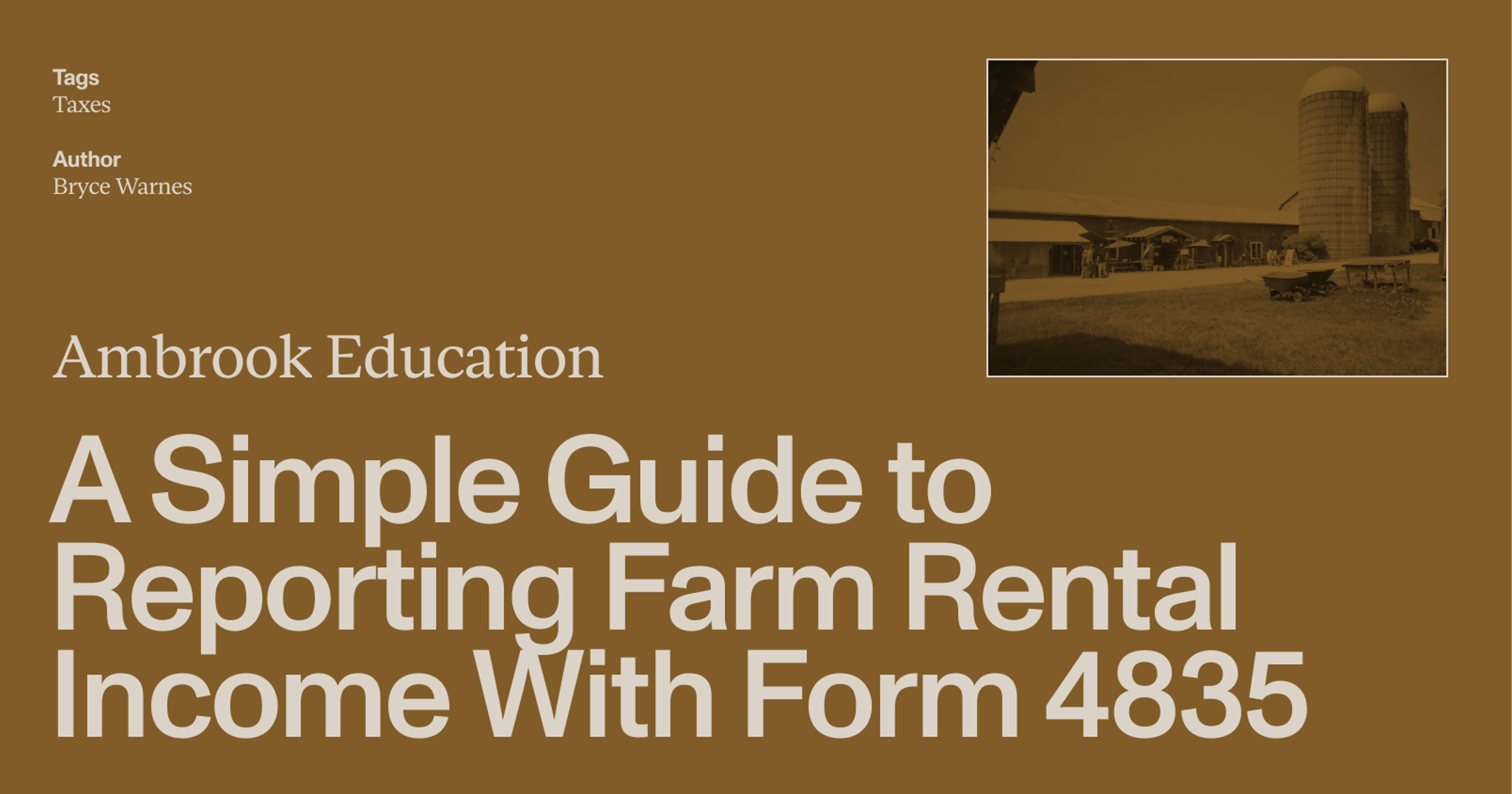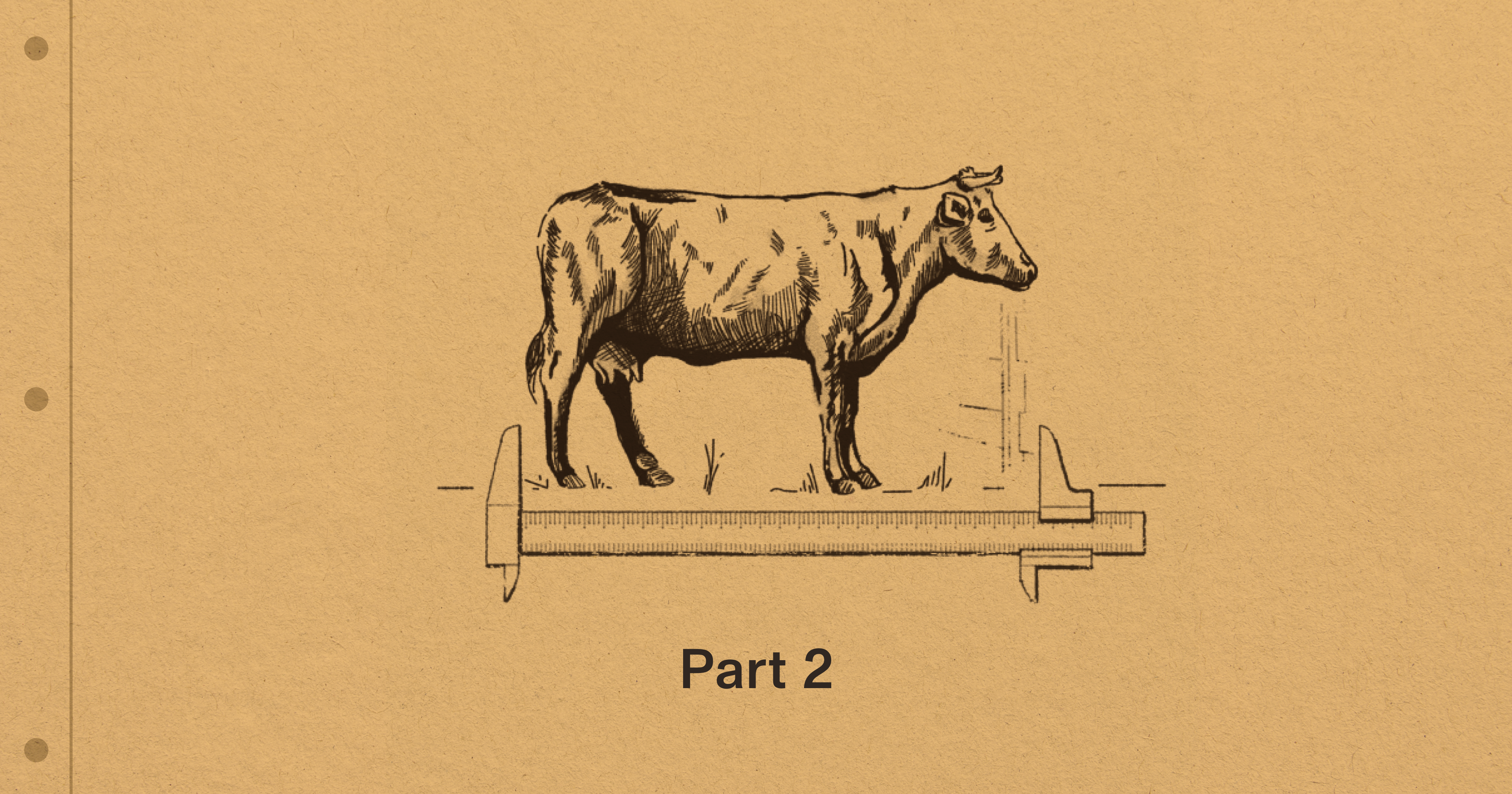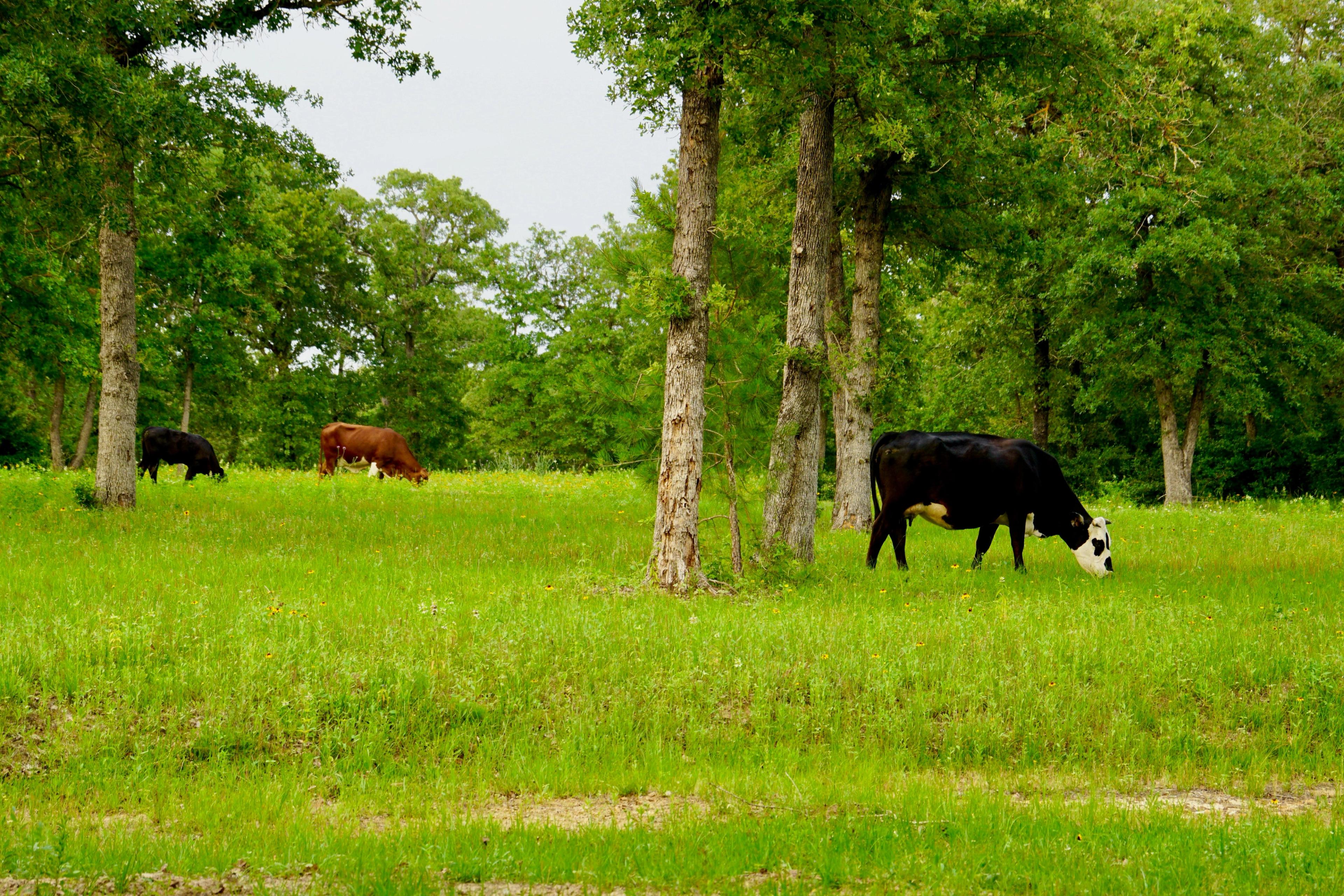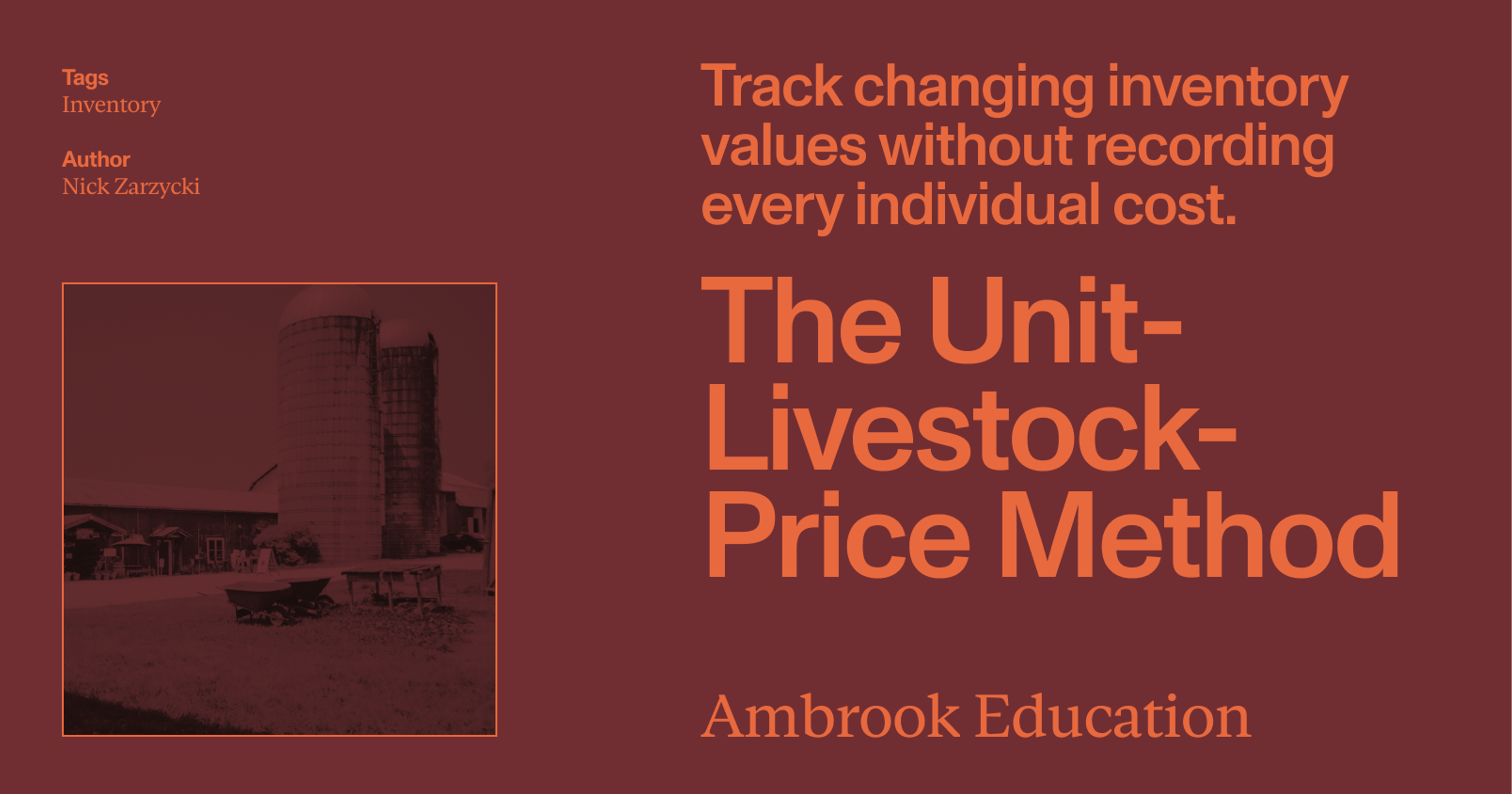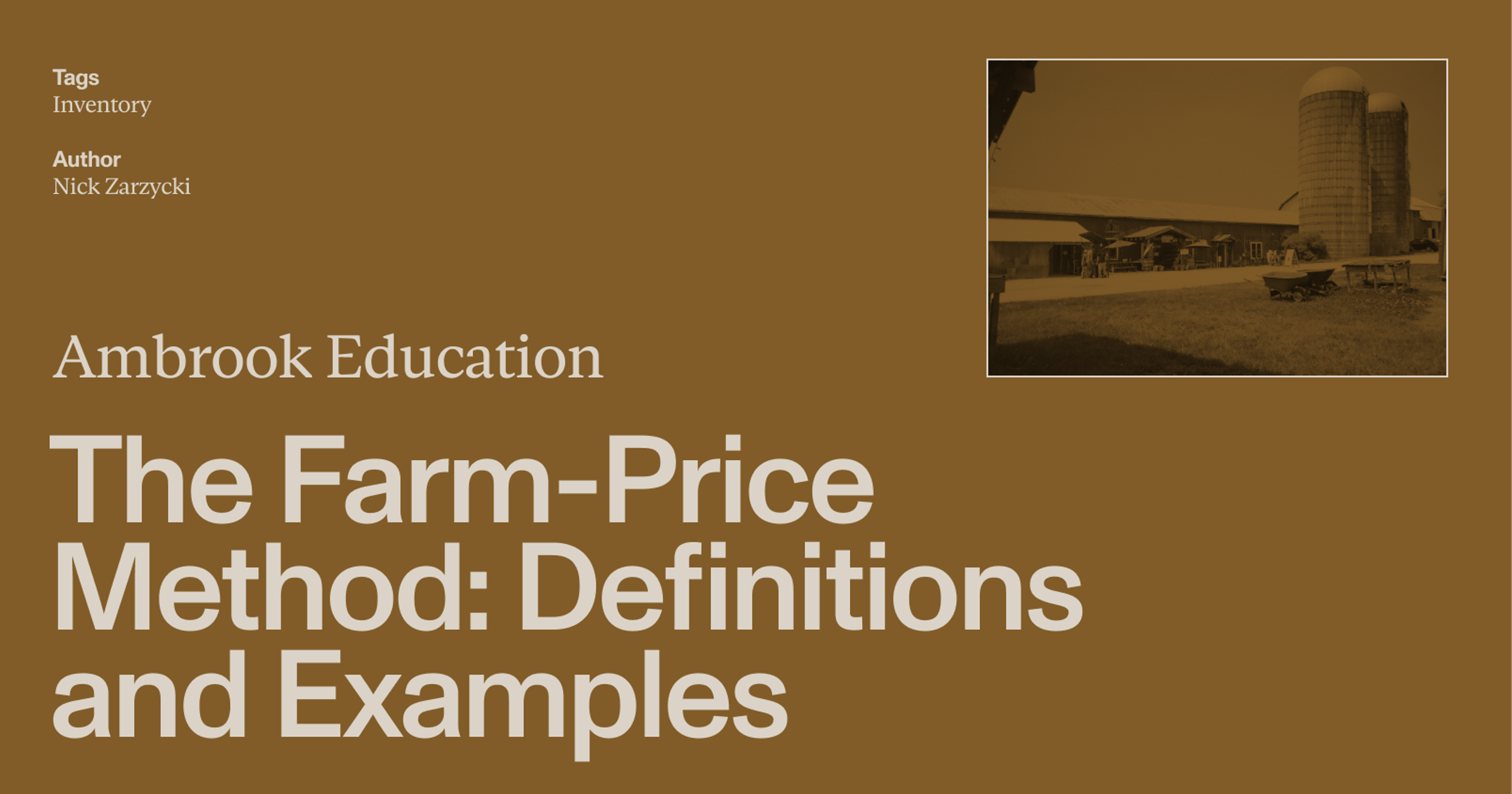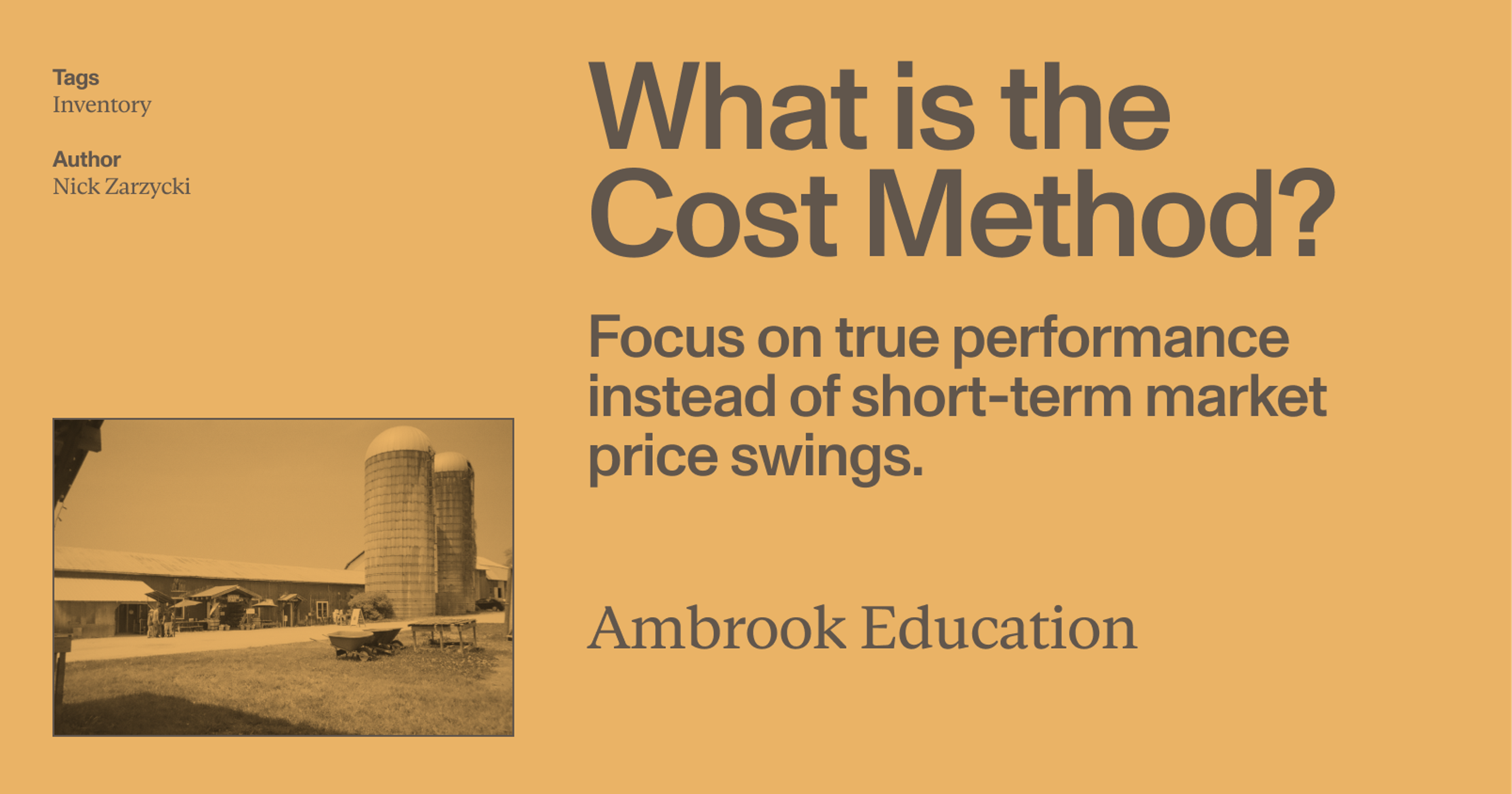Livestock leases can help owners earn additional income while providing lessees with new genetics and expanded production without having to purchase more animals outright.
Leasing livestock can be a great option for landowners who don’t have livestock but want to use grazing land productively, for operators who want to expand production without buying more animals outright, and for ranchers looking for access to new genetics in order to grow and improve their herd.
If you own a breeding animal like a bull, which spends most of its time taking up pasture and eating up feed, a livestock lease agreement can also help offset the cost of ownership.
Whether you’re looking for an extra income stream or a bigger herd, here’s what you need to know about livestock lease agreements.
What is a livestock lease?
A livestock lease is the agreement between an animal’s owner and an operator allowing that operator to borrow an animal, typically for breeding purposes, in exchange for a fee.
That fee may be paid either as a flat rate or as a portion of the product of breeding. (Cash and share lease agreements are covered below.)
A livestock lease is similar to a grazing lease—except that, in this case, what is being leased is an animal (or animals) for the purpose of breeding, rather than land for the purpose of grazing.
In a livestock lease agreement, the owner is considered the lessor and the individual borrowing the livestock—often referred to as the ‘operator’—is considered the lessee.
An equitable lease agreement benefits both the owner and the operator.
Benefits of a grazing lease for the owner
Raising livestock while minimizing capital outputs. You can reduce the expenses of raising breeding livestock by having a lessee cover the cost of feed, vet bills, and pasturage. You may also be able to lease out an entire herd to an operator for a season for the sake of calf production.
Offsetting the cost of a breeding animal. If you keep breeding animals for the sake of maintaining your herd, there’s a good chance they spend a lot of time sitting around, eating, running up vet bills, and not doing much else. You can offset those costs by leasing the animal out.
Testing out new genetics. If you have a new breeding animal, you can lease it out to an operator to see how it performs and what the results look like before introducing it to your own herd’s genetics.
Gradually transferring ownership of a herd. In order to pass on their herd to a new operator, many retiring agricultural producers lease it out. This generates income while reducing costs and workload for the owner. Meanwhile, as animals in the herd die off, the operator replaces them with their own livestock, transferring ownership while preserving the genetics of the original herd.
Passing on knowledge to the next generation. For the owner, a livestock lease may provide the chance to mentor a younger producer and help them establish their own operation.
Benefits of a grazing lease for the operator
Accessing new genetics without the cost of ownership. Buying, raising, and owning breeding stock is expensive. An operator can reduce the cost of their operation by leasing an animal instead.
Profiting from livestock production without an initial outlay of capital. By leasing a herd for calf production, the lessee may be able to start their own livestock operation without the high upfront cost of buying their own herd.
Putting otherwise unused pasture to use. Pasture that might otherwise become overrun with brush may be maintained and put to use by leasing livestock that graze it. This is an alternative to a typical grazing lease, and may result in a larger profit.
Learning from older operators. A livestock lease agreement may be a means of working with and learning from an older, more experienced producer.
Gradually inheriting a herd. A livestock lease agreement may be the ideal means of taking over ownership of a herd while preserving its genetics.
Do you need a formal livestock lease agreement?
Many livestock agreements are signed with a handshake. For instance, you might borrow your neighbor’s bull for the breeding season in exchange for half the market value of the calves it sires, and leave it at that.
But putting a lease in formal terms—on paper and, ideally, notarized—has its benefits. For one, it protects both parties in case of a dispute or disagreement.
That doesn’t just save potential lost profit or legal fees. It helps protect the relationship between the owner and the operator, which can be especially valuable in family or informal arrangements. With the terms of the lease laid out clearly on paper, disagreements are less likely to arise in the first place.
It can also help you prove the source of your income. If you’re the owner, you can potentially earn passive income from leasing out your animal. Passive income is not subject to self-employment tax, which could mean significant tax savings.
If the IRS ever decides to question whether the income is truly passive, and potentially collect on what it considers unpaid self-employment tax, a written lease agreement can help you prove your case and avoid paying extra taxes.
So even if a written agreement takes more time to create and—thanks to notary fees—costs a little more than a handshake, your investment pays off in the long run.
What is included in a livestock lease agreement
The exact terms of your livestock lease agreement will vary depending on the type of agreement (cash rate versus shares). But most livestock leases include:
Names and addresses of the parties involved. Typically that includes the owner (lessor) and the operator (lessee).
Term. On what date the lease comes into effect and on what date it automatically terminates.
Number of animals. This includes both the animals being rented per the terms of the lease, and any additional breeding animals being leased for the season from other operators.
Payment information. How much is owed by the operator, how and when it will be paid, and any interest or penalties in case of a late payment. This is also a good place to note your state’s livestock lien laws. Depending on your state, the owner of a breeding animal may be entitled to keep its progeny if the operator fails to pay.
Security deposit. The owner may specify a security deposit to be kept in case of damages or loss.
Owner representations. These are all the assertions made by the owner regarding the qualities of the livestock they are leasing. That may include animal health, body condition score, fertility, breed registration, pedigree, structural soundness, libido, genetic DNA markers, and strength with expected progeny differences (EPDs). If the owner represents DNA markers, this is the place to specify that, in the event the genetic testing company made an error, the owner is not liable.
Animal identification. This clearly outlines how each leased animal will be identified (ear tags, brands, tattoos, RFID, etc.) to avoid disputes about specific animals, especially in herds with similar stock.
Lessee representations. These are all assertions made by the operator in regards to the animals being used for breeding. That includes the health and fertility of the herd, and information on any other breeding animals being introduced to the herd during the breeding season.
Additional health info. Either party may require additional health certification from a licensed vet.
Transportation. Who is responsible for transporting breeding animals to the operator’s land, how the animals will be transported, the delivery and pickup dates, compliance with the twenty-eight hour law, who is responsible for returning the animals to the owner, and liability in case of injury during transport.
Movement of animals. During the term of the lease, will the operator be allowed to move the animals to different farms or to pasturage different from their property? Where will the animals be moved and by what means?
Injury, death and illness. Who is liable for any harm that may come to the breeding animal prior to the lease date, during transportation, and during the breeding period.
Injury to people. Who is liable in the case of injury to individuals caused by the breeding animals.
Insurance. Whether either party is required to carry insurance, including the type of insurance and the amount of coverage.
Performance. How the operator may be compensated if breeding animals perform below a predetermined level, and clarify whether a vet must confirm underperformance (e.g. no conception) and what recourse is available (e.g. replacement bull or partial refund).
Production share. If the lease is a share agreement, how much of the production of the breeding operation each party will receive.
Land details. Information about the land where breeding animals will be kept, including which land and where, total acreage, stocking rate, type of pasture, deeded or leased, and who is responsible for its maintenance.
Feed and nutrition. Feed requirements for breeding animals in terms of quantity and type, and who is responsible for feeding.
Costs. Besides feed, who is responsible for other costs, including vet bills, medication, supplements, and additional procedures.
Right of inspection. Whether the owner is allowed or required to inspect the breeding animals or the animals in the operator’s herd during the term of the lease.
Ownership. Who owns the breeding animal. This may seem obvious, but it should be specified here to prevent disputes from arising later. Include copies of titles and registration papers.
Option to purchase. Whether the operator has the option to purchase breeding animals at the close of the breeding period, and on what terms.
Subleasing. Typically, a subleasing provision specifies that an operator may not sublease a leased animal to another farmer.
Title of progeny. Who owns any progeny produced by the breeding operation. It may be necessary to make reference to your state’s livestock lien laws.
Relationship of parties. Specify that the owner and operator are not forming a partnership. If a partnership is formed, it could mean each party becomes liable for the other’s debts. Specifying that you are not partnering in an operation does not prevent you from accidentally forming a partnership, but it helps you to make your case in the event the matter is ever disputed.
Termination. How the lease may be terminated by either the owner or the operator, the amount of notice needed, and the requirement for a written termination.
Liquidated damages. In the case of either party’s negligence, it can be difficult to determine the exact cost of damages. Indicating liquidated damages means specifying certain actions or failures to act, and stipulating an amount owed to either the owner or the operator in the event those actions (or inactions) are taken.
Confidentiality. Specify whether any part of the agreement, such as payment terms, is to remain confidential.
Choice of law. If the owner and the operator reside in different states, specify which state’s laws are applicable to the lease agreement, including those related to animal welfare, transport, and treatment.
Forum clause. This clause specifies a particular court where any disputes will be settled. It is important to include this if the owner and operator live far apart and appearing in court would require either to make a long journey.
Dispute resolution. How mediators or arbitrators will be selected in the event a dispute arises.
Successors and assigns. Address whether the lease transfers to successors in case of death, sale of business, or trust transfer, especially for multi-year agreements.
Attorney’s fees. Specify which party is liable for legal fees in case of a dispute. Typically, the party that has lost the dispute is responsible for both parties’ fees.
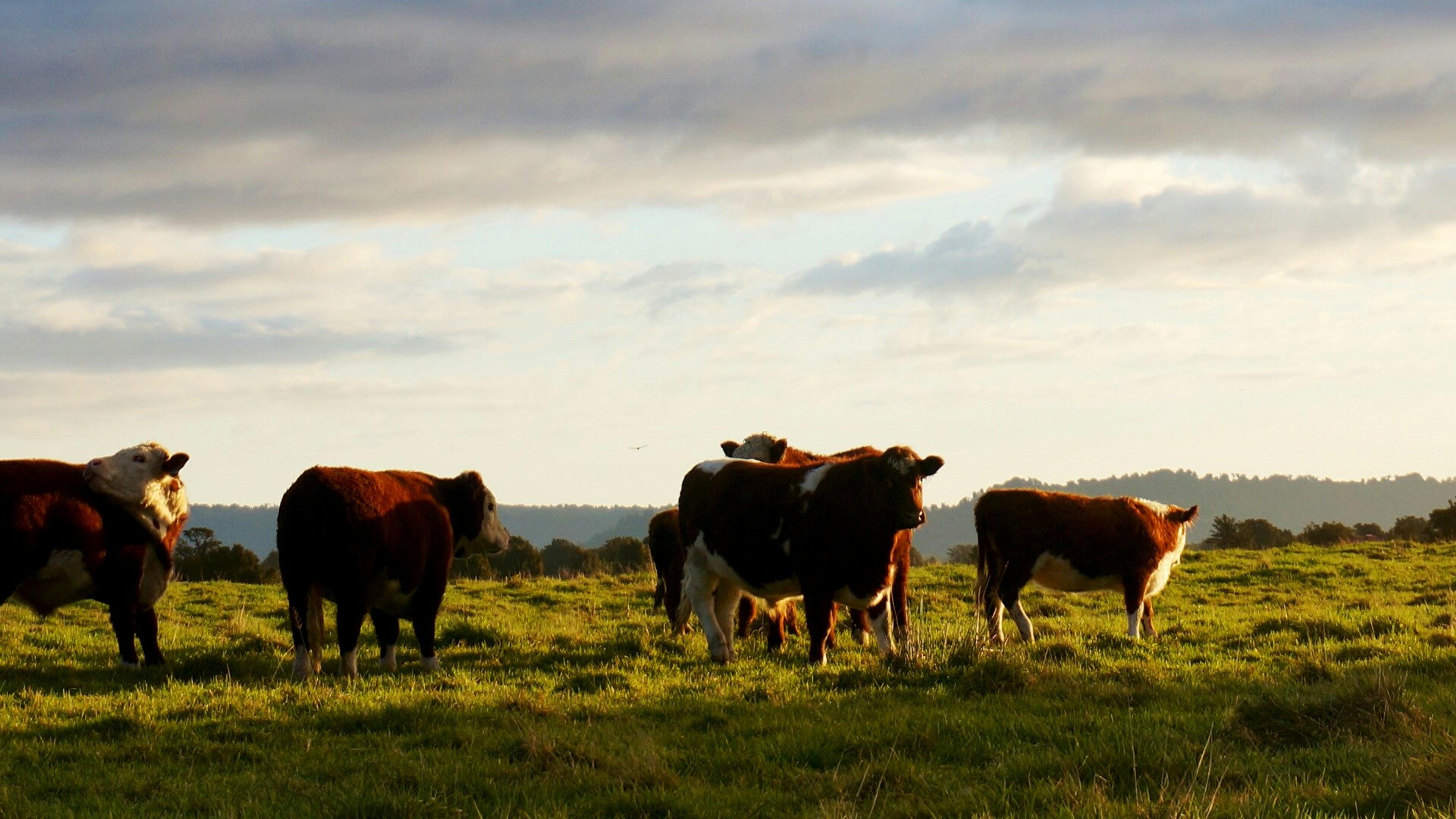
Celia Sun on Unsplash
How do you draft a livestock lease?
The best way to draft a livestock lease and ensure it includes all the information you need is to sit down with an attorney familiar with agricultural businesses.
But you may be able to reduce the time an attorney spends on your lease—and the amount you pay in legal fees—by drafting your own lease based on a template and bringing it to a lawyer to review.
If you decide not to work with an attorney, then at least aim to have the lease notarized. In the event of dispute, your livestock lease may be easier to enforce in court if it has been witnessed and signed by a notary.
Depending on where you live, you may also have the option of registering your livestock lease with the state government, making it a matter of official record.
Livestock lease templates for agricultural producers
For help getting started with a livestock lease, have a look at these lease templates from reputable sources.
The Livestock Rental Lease from the North Central Farm Management Extension Committee. You can find the lease template after page 26 of the document linked here.
The Sample Bull Lease from the Texas A&M AgriLife Extension. The sample lease begins on page 77 of the linked document.
The Sample Cow-Calf Share Lease Agreement from the Province of Manitoba. This lease is written with Canadian farmers in mind, but may be adapted for American owners and operators. It starts on page 7 of the linked document.
The Illinois Livestock Share Lease from the University of Illinois Extension. Written with Illinois farmers in mind, this lease can be adapted for owners and operators in other states.
Share rental agreements vs. cash rental agreements for livestock
A livestock lease typically takes the form of either a share rental agreement or a cash rental agreement.
With a share rental agreement, the owner and the operator each cover some of the costs of the operation and they each keep a share of the offspring equivalent to their contribution.
With a cash rental agreement, the operator pays a fixed rate to rent livestock, and the owner’s involvement in the operation is minimal.
Share rental agreements are much more common with livestock leases than cash rental agreements. (Contrast this with grazing leases, where both types of agreement are common.)
Some livestock leases combine a flat fee plus a performance bonus or a smaller share of offspring. While not the norm, these hybrid agreements are becoming more common, especially with higher-value animals.
That being said, each type of agreement comes with its own benefits to owners and operators, and which one you choose will depend on your particular situation.
Livestock share rental agreements
Under a share rental agreement, each party contributes resources to the breeding and calving operation. These may include the cost of feed, supplements, vet bills, transportation, hired help, and equipment.
They also contribute their time and labor. Often the owner takes on a more managerial role while the operator handles day-to-day tasks, but this is not always the case.
As payment, the owner receives a portion of the product equivalent to their contributions. The value of the product may be valued as average market value or sale value of the progeny of the breeding operation.
For instance, if the owner pays 25% of the costs and performs 25% of the labor, they receive 25% of the product. The operator keeps the remaining 75%, assuming they contributed 75% of the costs and labor.
The goal when drafting this type of lease should be an equitable share rental agreement. That is, each party receives revenue equivalent to what they have contributed.
Benefits of a share rental agreement to the owner
Reduced labor retaining a breeding herd
Source of rental income
Returns on capital investment, offsetting the cost of owning and caring for a breeding animal outside the breeding season
Allows for gradual transfer of ownership (cash rental agreements typically do not)
Possible tax advantages
Benefits of a share rental agreement to the operator
Making use of available capital (pasture, other facilities) without tying up cash in the purchase of a breeding animal
Risk of the operation is shared with another party (the owner) and responsibility for death, injury, or nonperformance of the animals is clearly spelled out
May provide more access to capital (that is, the value of a breeding animal) than a lender would be willing to provide
Able to borrow capital (the animal) at a good interest rate, assuming the agreement is equitable
Can increase the volume of their operation to a level that would not otherwise be possible
For beginning operators, it can help with getting started in livestock production
Make efficient use of labor if the operator is underemployed
How are rates set in a share rental agreement?
To draft an equitable share rental agreement, both parties must take into account their respective contributions to the operation and ensure that their payouts, once the operation is complete, reflects those contributions.
Before finalizing a share rental lease for livestock, the owner and operator should calculate:
The total cost of the operation
Which costs are to be contributed by each party separately and which costs are to be shared
The percent of costs contributed by each
The quality of the livestock
The cash equivalents of contributions like labor, equipment, and land, as well as the relative risk undertaken by each party
How the product will be valued (by average market price, sales price, or another factor)
How the cost of death or injury to livestock, or any other losses, will be shared
Cash rental agreements for livestock
With a cash rental agreement, both parties agree to a flat rate, typically paid in cash, for the rental of livestock.
This type of agreement is more common with other types of agricultural leases, such as grazing leases. However, it may have benefits for livestock rental in certain situations.
For instance, an operator could pay an owner a flat rate to rent their breeding herd for the season. The operator covers all costs and labor. In exchange for the rate they pay the owner, they keep all the progeny of the breeding operation.
Benefits of a cash rental agreement to the owner
Fixed income with no operating expenses or risk
Contributions such as management and labor may be minimal
Tax benefits due to passive income
Benefits of a cash rental agreement to the operator
Full control of operations and responsibility for management
If the product sales price increases, the owner enjoys the increased revenue without having to pay out a share to the operator
How are rates set in a cash rental agreement?
The owner and operator must work together to determine a cash rental rate that serves them both well.
That could mean taking into account many variables, such as the value of the rented livestock, the likely sale price of the product, the cost of inputs like feed and medicine, and the risk shouldered by the operator.
On the other hand, the owner may simply have an idea of how much income they would like to earn, and the owner may have an idea of how much they would be willing to pay. Reaching an agreement could be more like haggling than doing complicated accounting. It depends on the needs and expectations of each party.
Tax benefits of livestock leases for owners
For the owner, a livestock lease typically comes with the potential benefit of tax savings.
Income from leasing out livestock may be classified as passive income. Passive income is not subject to federal self-employment tax. Since self-employment tax is 15.3% of the total amount earned, that could result in significant tax savings for the owner.
Cash rental agreements and share rental agreements each come with a different likelihood of earning passive income, which is determined by a variety of factors.
Tax benefits of cash rental agreements
The tax treatment of income rental agreements is the most straightforward.
If the owner earns a cash rate for renting out their livestock and doesn’t otherwise participate in the farming operation, it’s reported as rental income and not subject to self-employment tax.
That being said, if the owner takes a hands-on role in the operation, their participation may no longer be considered passive for tax purposes, and they could end up owing self-employment tax on their earnings.
Tax benefits of share rental agreements
Since share rental agreements require the owner to contribute more capital and labor than cash rental agreements, there is a higher likelihood that the owner’s income will be considered nonpassive for tax purposes.
By limiting their involvement, the owner can remain a non-material participant in the operation and enjoy tax savings. They can do this by taking on a managerial role. But their participation may become material—and their income from it nonpassive—if they do any three of the following:
Inspect farming activities like feeding and calving. (Inspecting the operator’s property and improvements to the property does not count.)
Consult with the operator about the production of the operation
Contribute at least half of the equipment, labor, and other essentials used in the operation. (But even if their contribution is less than half, the IRS may still take their total participation into account and determine that their income is nonpassive.)
Share at least half of the cost of the operation. (As with equipment and labor, even if this amount comes to less than half, the IRS may consider them a participant in the operation.)
If the owner does not meet any of these three qualifications, they may still be considered an active participant if:
They make regular, frequent decisions that affect the operation; or
They work at least 100 hours spread over five weeks helping with the operation.
Finally, even if the owner does not meet any one specific qualification, the IRS may take their total contributions into account and determine that they were an active participant. In that case, the owner must pay self-employment tax on their earnings.
For more on passive income and how it’s treated for tax purposes, check out How to Report Farm Rental Income and Expenses With Form 4835. While this article has to do with a particular tax form, it also includes a breakdown of how the IRS distinguishes between passive and nonpassive income for tax purposes.
There are many gray areas when it comes to passive versus nonpassive income. If you are a livestock owner considering entering into a share rental lease agreement, and potential tax savings is a major factor affecting your decision, sit down with an attorney to go over the details.
They can help you steer clear of any activity that could result in nonpassive income and draft a lease that gives you the best chance of enjoying the self-employment tax break.
Ambrook helps you take stock of your finances
In order to figure your return on a livestock operation, or to determine the costs that may be involved, you need clear, accurate numbers tracking your expenses. Ambrook automatically imports and categorizes all your spending so you can make informed decisions.
Plus, with time-saving bookkeeping automation features, automatically-generated financial reports, streamlined bill pay and invoicing, and other powerful accounting and financial management tools, Ambrook doesn’t just make expense and revenue tracking simple: it takes the guesswork out of running your business. Want to learn more? Schedule a demo today.
Want to learn more about Ambrook?
This resource is provided for general informational purposes only. It does not constitute professional legal advice and may not apply to your specific situation. Consult with professional legal counsel before making any decisions about your business.


